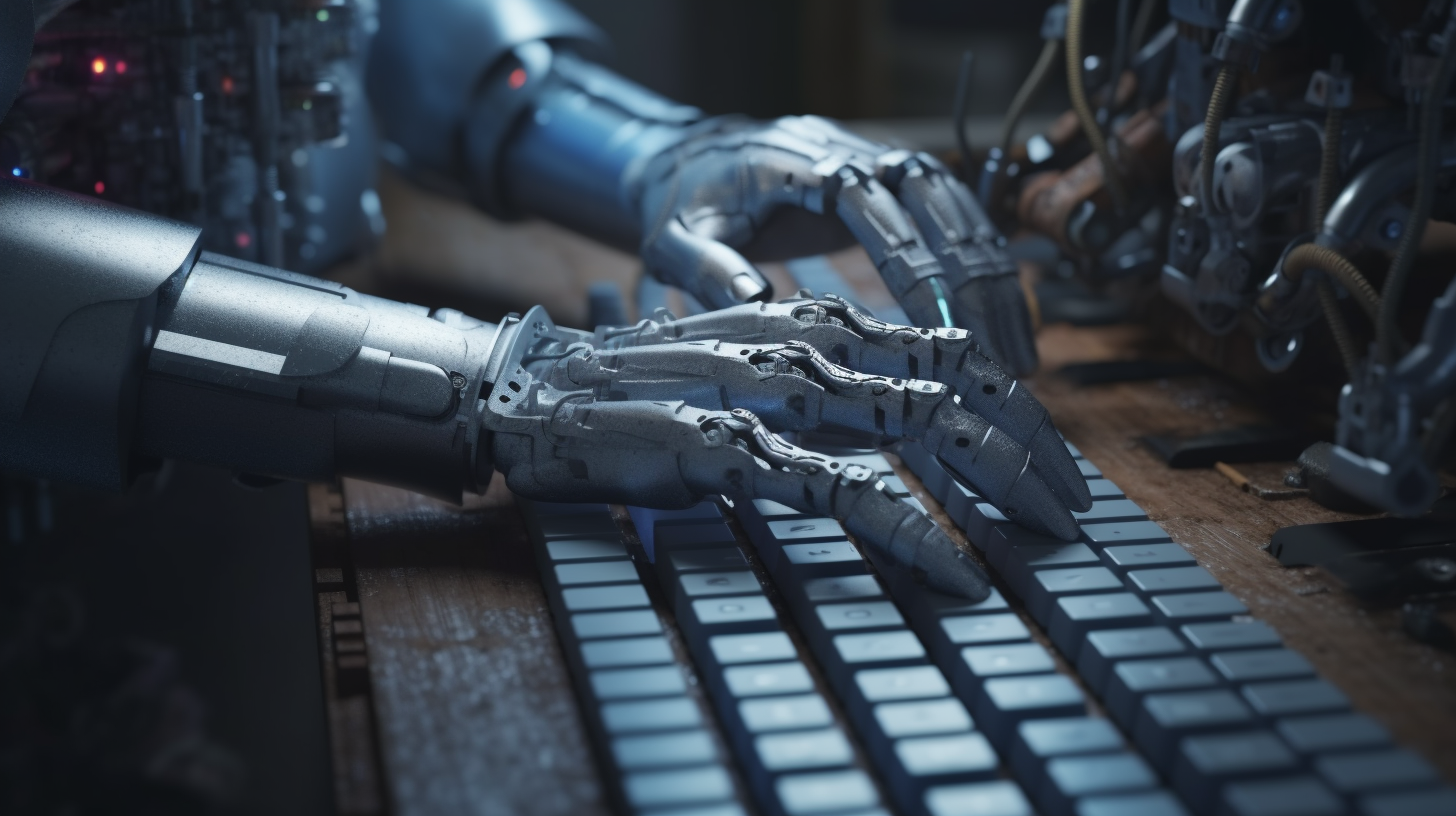Technology is a fascinating and transformative force, often evoking both awe and fear. One such innovation that has captured the attention of numerous industries is generative artificial intelligence (A.I.). Its potential capabilities and the potential jobs it may replace have generated fear and concern. The speed at which generative A.I. has gained widespread use is truly remarkable. However, controversies regarding the acquisition of datasets, wherein images, text, and audio are gathered from numerous web sources to generate “new” content, have ignited debates on the legality and ethics of such practices. Regardless, the reality remains that the proverbial Pandora’s box has been opened, and A.I. is now an integral part of our world going forward.
While there are valid concerns about the misuse of generative A.I., I firmly believe that, if utilized correctly, it can be a game-changing tool for various industries, including graphic design and writing. However, this doesn’t diminish the fact that it can also be prone to abuse, like many other technologies. I recall early in my web development career when platforms like WIX and Squarespace, even as far back as Geocities emerged, enabling businesses to create websites without the need for traditional web developers. Similarly, accessible tools like Canva simplified graphic design. At the time, it seemed like my job was becoming obsolete. However, these tools ultimately proved to be complementary rather than replacements for many designers. I believe generative A.I. will follow a similar trajectory, although these are simply my opinions, and I remain open to being proven wrong or learning new perspectives.
Now, let’s explore how generative A.I. can be incorporated into a design workflow.
There are countless A.I. platforms available today for various mediums. Stable Diffusion and Midjourney, for instance, are effective for generating images. Chat-GPT is excellent for text generation, while Eleven Labs offers realistic text-to-speech capabilities. Even Adobe is experimenting with tools that can recolor vector artwork, alter videos, and build websites. The potential is both astonishing and intimidating.
I have personally experimented with several workflows integrating generative A.I. into my daily job.
Web Development:
As someone who frequently works on websites, predominantly in WordPress but occasionally on more traditional platforms, I have witnessed the significant impact of Chat-GPT on expediting certain elements of my work. When building sites, there are instances where I need to add new functionality or modify a theme using JavaScript, CSS or similar tools. Typically, I would search through Google to find the necessary information and solutions. With Chat-GPT, I can simply ask for assistance, and it not only provides me with working code but also explains how it functions. However, it is important to exercise caution as it can sometimes provide confidently incorrect information. Consequently, it remains crucial to possess a solid understanding of the task at hand. Nonetheless, Chat-GPT has proven invaluable in obtaining quick answers, often surpassing the time-consuming process of sifting through search results.
Another intriguing aspect of Chat-GPT is its ability to analyze and improve existing code. You can paste your code and ask for assistance in fixing or enhancing its functionality. Nevertheless, it is essential to note that it can still make errors when performing such tasks. However, with time, these limitations may be overcome, making it a less risky option.

Writing Content:
Effective writing is vital for both websites and print media, and Chat-GPT can undoubtedly assist in this area. I have employed Chat-GPT to aid me in crafting headlines, taglines, email subjects, and even brainstorming ideas. This tool can truly shine when provided with appropriate content to work with. For instance, you can offer a few sentences and ask it to expand them into a paragraph or even an entire essay. However, it is important to recognize that it may generate content that lacks accuracy when working with minimal input.
When using Chat-GPT for writing content, it is crucial to understand that the quality of the output depends on the effort you invest. If you provide it with subpar or incomplete information, the results will likely be subpar as well.
However, where Chat-GPT excels is in its ability to serve as a personal editor. If you provide it with a fully written paragraph or essay and ask for assistance in improving its flow or making it sound more professional, it can often deliver accurate and valuable suggestions. I have even used Chat-GPT to convert bodies text from present tense to past tense or from first-person to third-person, and the outcomes have been astonishing. Nevertheless, it is still essential to review the content for errors and inaccuracies since Chat-GPT is not flawless.

Generating Images:
The ability of generative A.I. to generate images is truly mind-blowing. However, ethical considerations regarding sourcing image data need to be addressed and resolved. Despite this, the sheer quality of the generated images is impressive. I can envision a future where graphic designers completely replace stock photos with photorealistic renders tailored to their exact needs—an area that Adobe and Shutterstock are already exploring. Nonetheless, a current limitation lies in the difficulty of precisely fine-tuning specific details or incorporating desired elements. While I can request an image of a tractor driving down the streets of Manhattan, it is a nearly impossible to ask for a specific logo on the tractor or specify particular elements accurately. The output remains somewhat random. Nevertheless, one can always utilize image editing software like Photoshop to refine and adjust the generated image manually, which brings me to my next point.
Generative A.I. images serve as an excellent starting point for traditional artists and designers. Although it may not yet accurately portray an exact vision, it is immensely helpful in providing inspiration, generating ideas, setting the atmosphere, or suggesting poses for a drawing. I have even experimented with using generative A.I. to generate ideas for logos, page layouts, mood boards and drawings. While the results are not perfect, they often spark ideas that I may not have considered before. It is a tool that I believe can assist artists in their creative process.

Conclusion:
To summarize, generative A.I., particularly Chat-GPT, can be harnessed in various ways within a graphic design and web design workflow. It proves beneficial for solving coding issues and assisting in code revision. It can aid in generating and improving written content, although caution must be exercised, and human review is essential. Additionally, generative A.I. images offer a valuable starting point for artists and designers, inspiring creativity and serving as a well of new ideas. However, it is crucial to recognize the limitations and understand that generative A.I. is a tool that should complement human creativity rather than replace it.
The future of A.I. undoubtedly requires extensive thought and debate regarding its implications for numerous industries as well as the ethical concerns. However, I hold an optimistic view, believing that A.I. will eventually become a tool that helps us rather than harms us. Rather than succumbing to a dystopian outlook, I envision a brighter future where A.I. aids us in achieving our goals. Nonetheless, I for one welcome our new A.I. overlords.
All images in this post were generated using MidJourney to go with the theme of A.I.
Share on social media




